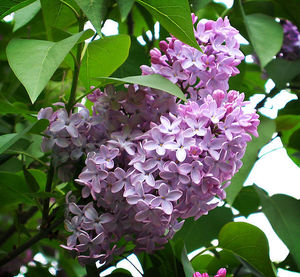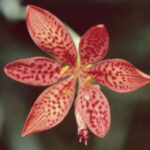Spring is around the corner, and the scent of lilacs soon will be in the air if you add them to your garden. Lilac bushes are one of the hardiest bushes, surviving temperatures of 50 degrees below zero. They are also among the easiest to care for and will endure on their own for years without any care at all. Starting them out right and following a minimalist care plan will ensure your lilacs are hardy and healthy for many years to come.
Lilacs: Planting Conditions
Lilacs prefer full sun so plant them where they will receive a minimum of six hours each day. More is better. Soil should be well-drained. Prepare clay soil by adding cow manure, compost or any other kind of organic matter to the entire bed so roots have good soil to grow into. You can add some small gravel to the soil too but do not add starter mix to planting hole. Dig a hole wide enough for the roots to fit in comfortably and no deeper than one or two inches deeper than the bush’s original depth. Space bushes 10 to 15 feet apart except for hedges which can be six feet apart.
Lilacs: Fertilizer
Do not fertilize lilacs during the first year. Add liberal amounts the second and each subsequent year. Apply in March or early April before new growth begins to appear. Use fertilizer with a 5-10-5, 5-10-10, 10-10-10 or 20-20-20 rating. Avoid fertilizers with a high nitrogen level because they will promote leaf growth but not flowers. Spread in a broadcast method over root area.
Lilacs: Pruning
Lilacs begin forming the buds for next year’s blooms in the fall. For this reason it is best not to prune during the dormant cycle other than to remove damaged limbs or dead wood. This would also be a good time to remove the sucker growth ideally from below the soil. Once flowers have bloomed and begun to fade, pruning to shape the bush can take place. To enhance the appearance of the bush, spent blooms may be pruned but it is not required, merely cosmetic.
Lilacs: Regular Care
Lilacs are hardy plants needing minimal care. Watering should only be done during periods of drought. Adding a two to three inch layer of mulch will help contain moisture, control weeds and keep the temperature of the roots stabile. This is important during winter, particularly the first before roots are well-established to prevent heaving.
Lilacs: Issues with Blooming
If the bush does not flower, there may be several causes to investigate. Proper sunlight is necessary for flowers to form and bloom. Transplanting to a sunny location or removal of obstacles blocking sun may be needed. Soil rich in nitrogen will produce leafy bushes but hinder blooms. A soil test followed by light root pruning may help. If late summer, fall or dormant-period pruning was done, the buds may have been removed. Finally, some lilac bushes to not produce blooms for five to seven years and may just need more time.
There isn’t much to planting and caring for lilacs. Many abandoned homesteads still proudly display annual lavendar blooms after years of neglect. Taking a little time to prune, water and occasionally fertilize means you’ll enjoy their fragrant beauty for many years.




